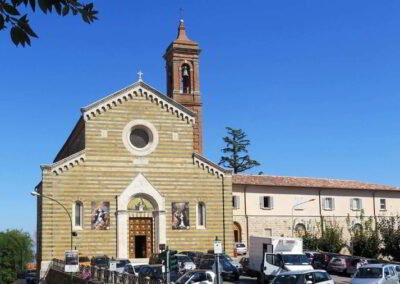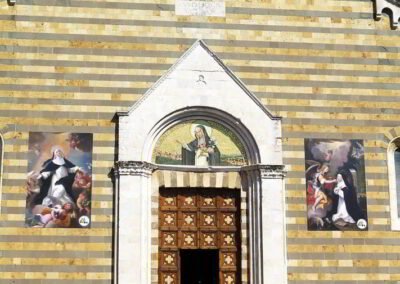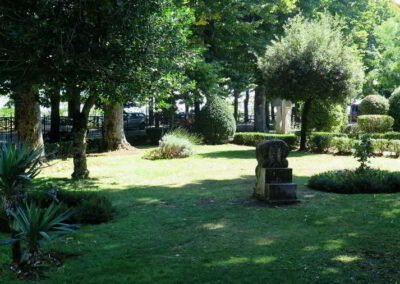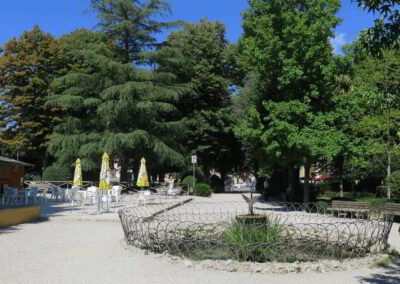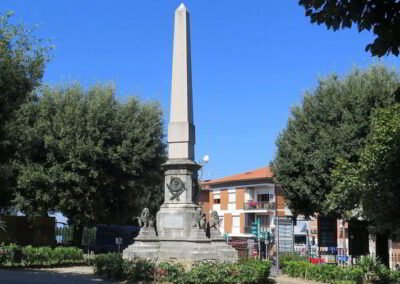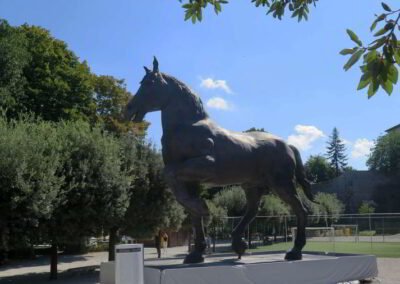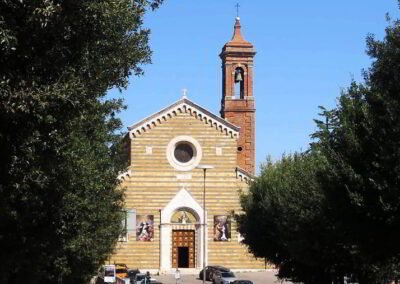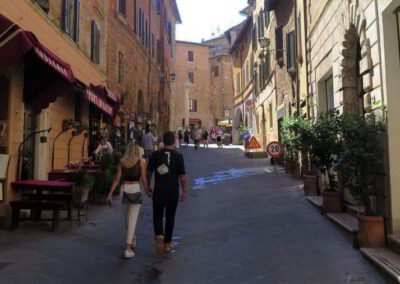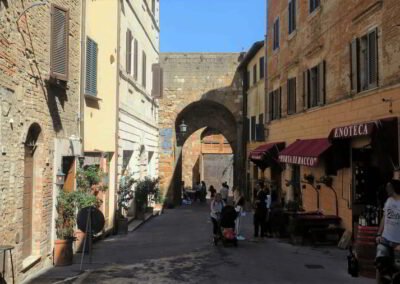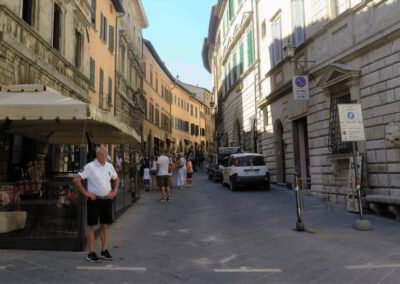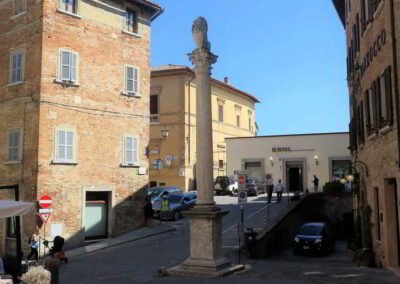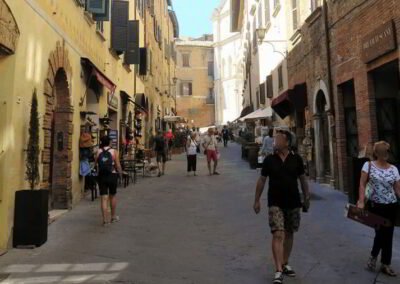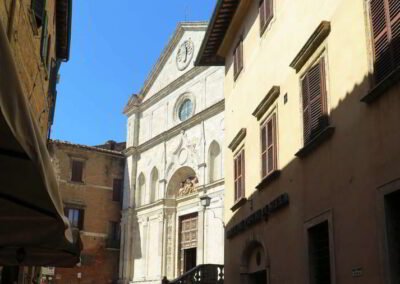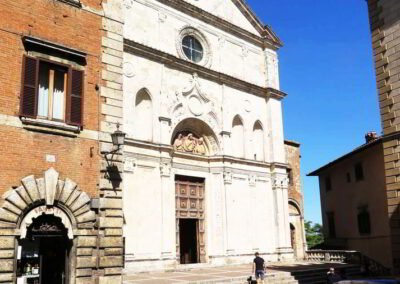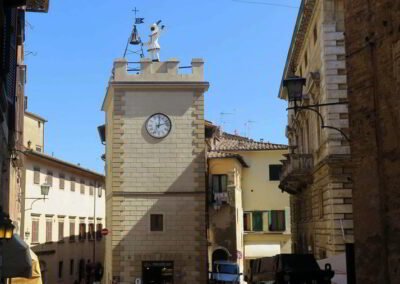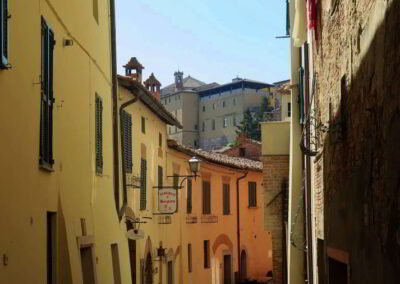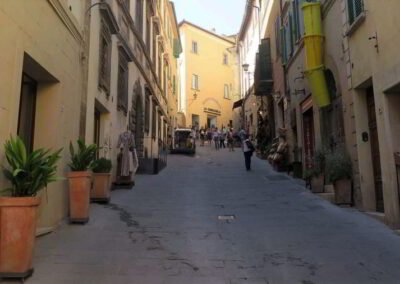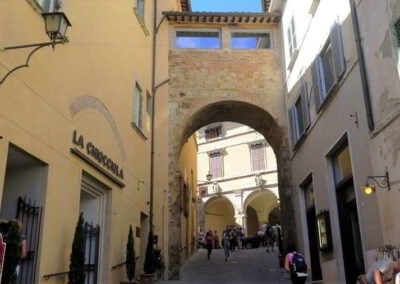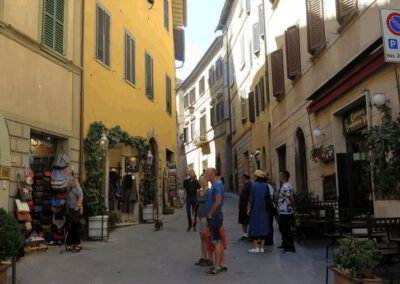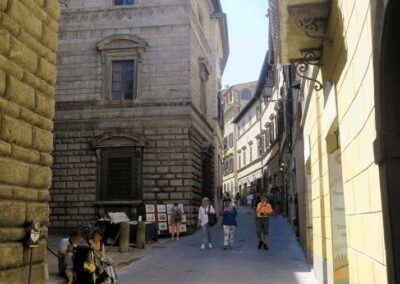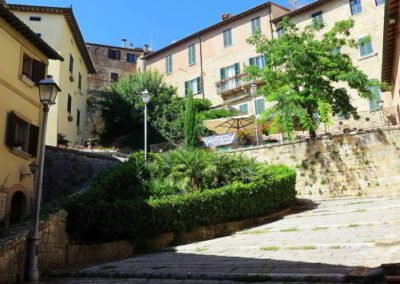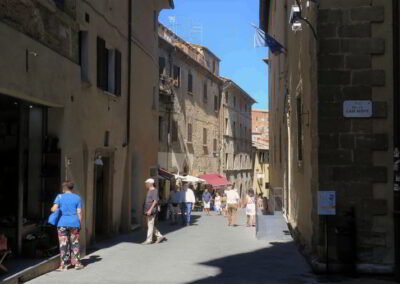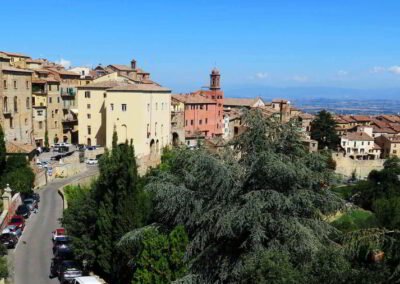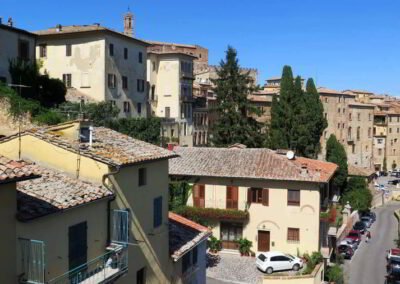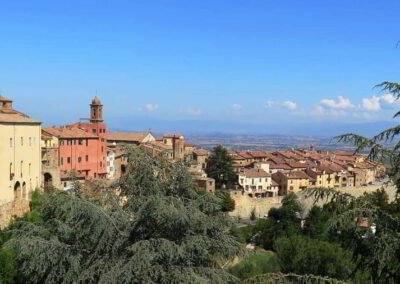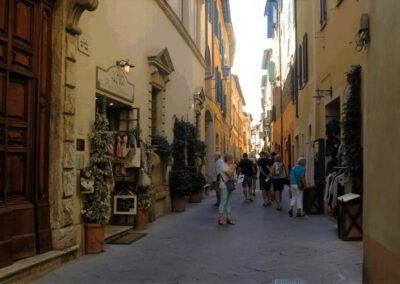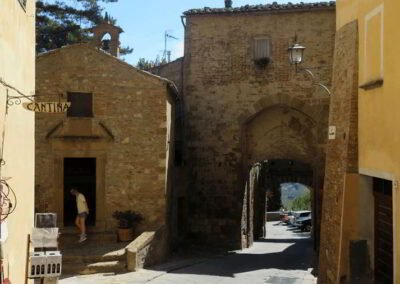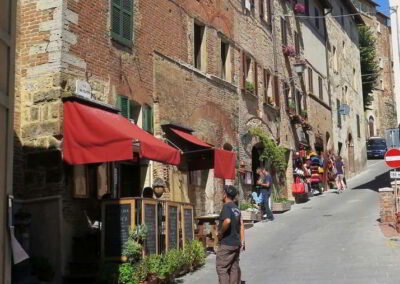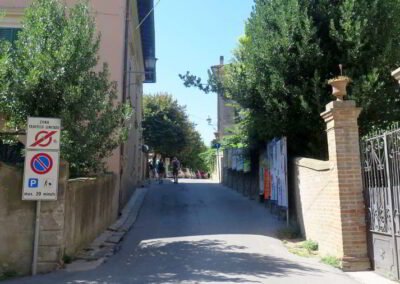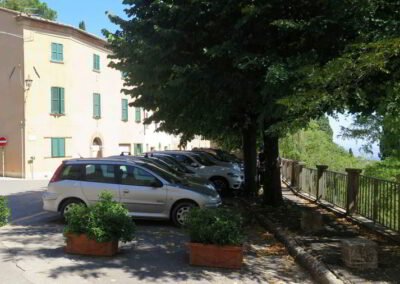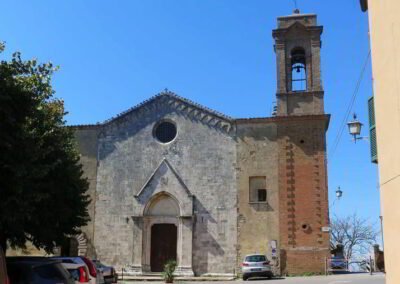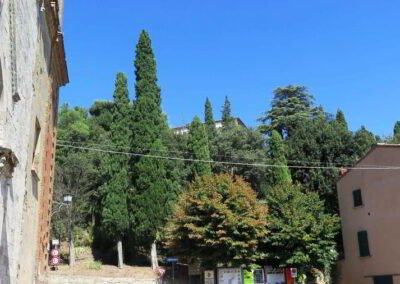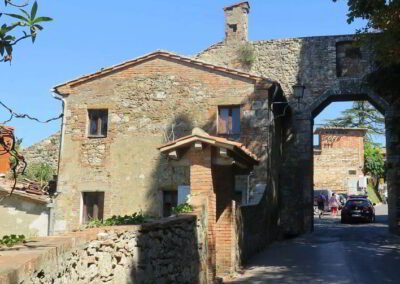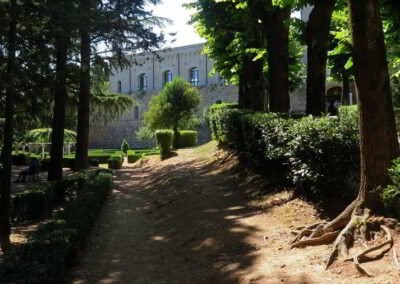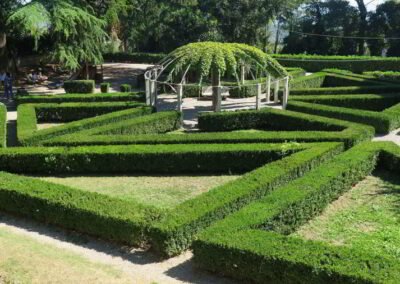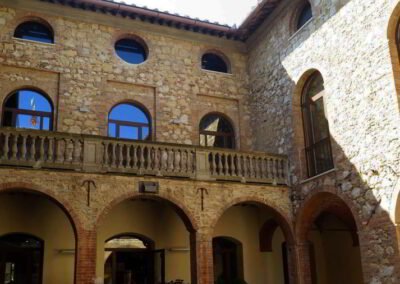HOME
THE REGIONS OF ITALY
PLACES IN ITALY
Italy in Photos
Piazza Michelozzo, 53045 Montepulciano Italy (September 2018)
Montepulciano
Montepulciano, in the heart of Tuscany, Italy, is a quintessential medieval hill town renowned for its rich history, breathtaking landscapes, and world-class wines. Perched atop a ridge at an elevation of over 600 meters, Montepulciano offers stunning panoramic views of the Val d’Orcia and Val di Chiana, two of the most picturesque regions in Tuscany. The town is a perfect blend of Renaissance elegance and medieval charm, making it a must-visit destination for those seeking an authentic Tuscan experience. Montepulciano’s history dates to Etruscan times, with evidence of settlements in the area as early as the 4th century BCE. However, it was during the Middle Ages and the Renaissance that Montepulciano truly flourished. The town became a strategic stronghold due to its location between the powerful city-states of Florence and Siena. This led to a rich cultural and architectural heritage, as the town was heavily influenced by the artistic and architectural trends of these cities. Throughout the centuries, Montepulciano was a centre of commerce, art, and political power. Its streets are lined with grand palazzos, churches, and public buildings that reflect its prosperous past. The town’s Renaissance architecture, much of which was designed by famous architects like Michelozzo and Antonio da Sangallo the Elder, showcases the wealth and cultural importance Montepulciano enjoyed during this period.
One of Montepulciano’s most striking features is its well-preserved historic centre, which is a labyrinth of narrow cobblestone streets, steep alleys, and elegant piazzas. The town’s main square, Piazza Grande, is the cultural and architectural heart of Montepulciano. Surrounded by magnificent buildings such as the Palazzo Comunale, the Cathedral of Santa Maria Assunta, and various noble palaces, Piazza Grande is a testament to the town’s rich history and artistic heritage. The Cathedral, although incomplete, houses important works of art, including a stunning altarpiece by Taddeo di Bartolo. The Palazzo Comunale, with its impressive tower, bears a striking resemblance to Florence’s Palazzo Vecchio, symbolizing the influence of Florentine architecture. Other notable buildings include the Palazzo Contucci and Palazzo Ricci, which are prime examples of Renaissance residential architecture. Beyond its architecture, Montepulciano is also famous for its vibrant cultural scene. The town hosts various festivals and events throughout the year, the most famous of which is the “Bravio delle Botti,” a historic barrel race held every August. During this event, competitors race uphill through the streets of Montepulciano, pushing large wine barrels in a thrilling display of strength and endurance. This festival, along with others, helps to keep the town’s traditions alive and offers visitors a unique glimpse into local culture.
No introduction to Montepulciano would be complete without mentioning its wine, particularly the Vino Nobile di Montepulciano. This prestigious red wine, made from Sangiovese grapes, is one of Italy’s oldest and most revered wines. It has been produced in the region since the 8th century and continues to be a source of pride for local winemakers. Wine enthusiasts visiting Montepulciano can explore numerous wineries, partake in tastings, and learn about the traditional winemaking processes that have been passed down through generations. In addition to its wine, Montepulciano is also known for its rich culinary traditions. The town’s cuisine is a celebration of the flavours of Tuscany, featuring dishes made from locally sourced ingredients, such as pici pasta, pecorino cheese, and wild game. Dining in Montepulciano offers a true taste of the region, with meals often paired with the town’s exceptional wines. Montepulciano is a town that encapsulates the essence of Tuscany. With its historic architecture, cultural richness, and renowned wine production, it offers visitors an unforgettable experience that is steeped in tradition and beauty. Whether you are strolling through its ancient streets, savouring its wines, or taking in the panoramic views of the surrounding countryside, Montepulciano is a destination that will leave a lasting impression on anyone who visits.
Worth a Visit
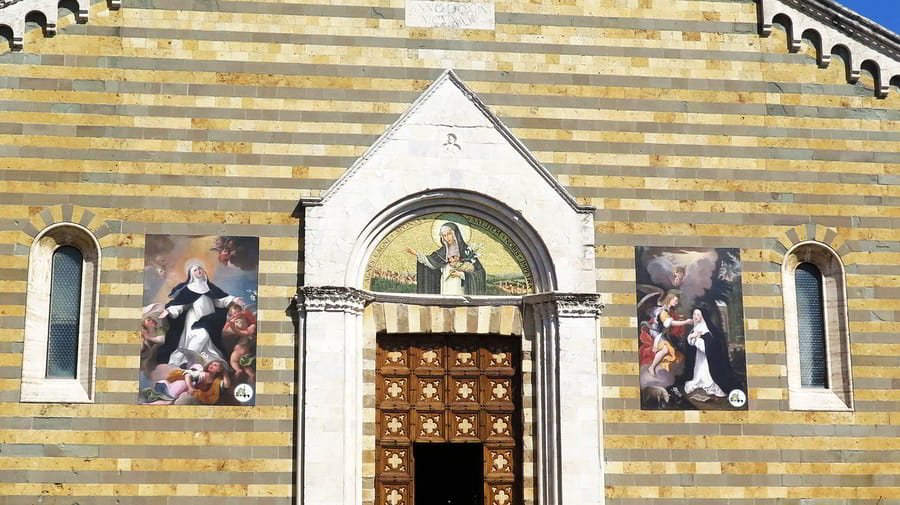
Parrocchia Sant’Agnese Convento Santuario in Montepulciano is a deeply revered religious site that holds significant spiritual and historical importance. Dedicated to Saint Agnes of Montepulciano, a Dominican nun and mystic who lived in the 13th century, the church and convent are central to the religious life of the town. The sanctuary was built in the 14th century, shortly after Saint Agnes’ death, to honour her memory and her contributions to the Christian faith. The church’s architecture is a blend of Gothic and Renaissance styles, reflecting the transitional period during which it was constructed. Inside, the sanctuary houses several important relics, including the incorrupt body of Saint Agnes, which is enshrined in a glass casket above the main altar. This relic is a focal point for pilgrims and visitors who come to seek the saint’s intercession and to admire the serene beauty of the sanctuary.
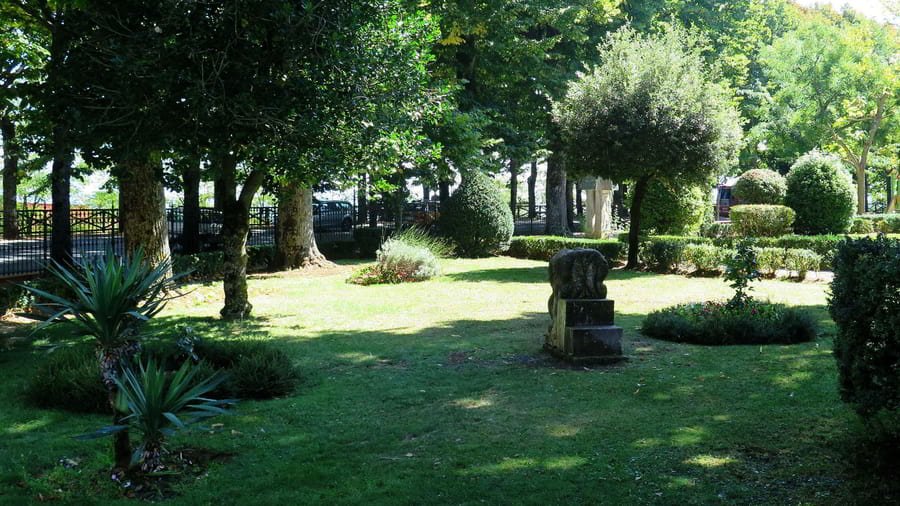
Giardino di Poggiofanti is a tranquil and scenic garden located in Montepulciano, a picturesque town in Tuscany. Perched on the slopes of the town, this garden offers stunning panoramic views of the surrounding Tuscan countryside, including rolling hills, vineyards, and olive groves. The Giardino di Poggiofanti is a hidden gem that provides a peaceful retreat for both locals and visitors. The garden is characterized by its lush greenery, well-maintained pathways, and a variety of Mediterranean plants and trees. Benches are strategically placed throughout the garden, inviting visitors to sit and take in the breath-taking views while enjoying the serene ambiance. The garden is particularly popular during the golden hours of sunrise and sunset when the light casts a warm glow over the landscape. In addition to its natural beauty, Giardino di Poggiofanti also features several statues and fountains that add to its charm. It is a perfect spot for a leisurely stroll, a quiet moment of reflection, or even a romantic picnic.
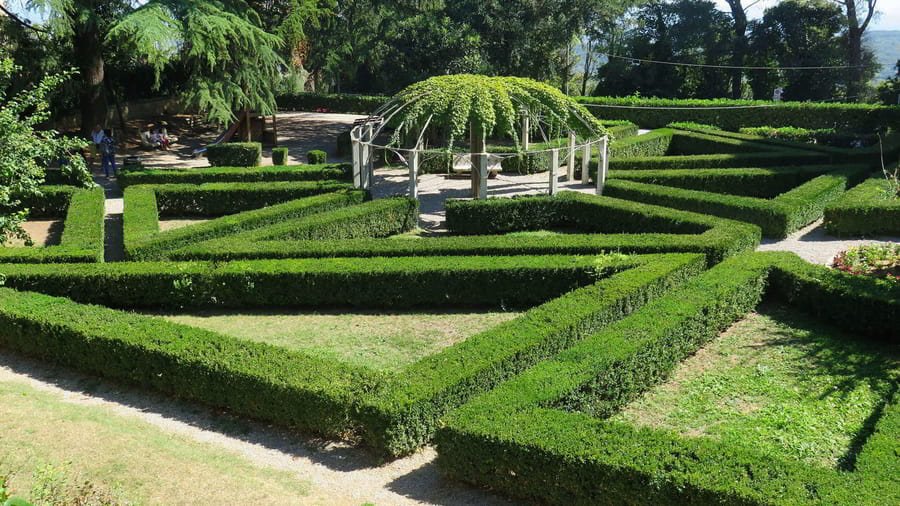
The Fortezza di Montepulciano, located on Via di S. Donato, is a historic fortress that stands as a symbol of Montepulciano’s rich past. Originally built in the 14th century, the fortress has undergone several modifications over the centuries, reflecting the changing needs and architectural styles of its time. The structure served as a defensive stronghold, protecting the town from invasions and conflicts during the turbulent medieval period. Perched on a hilltop, the Fortezza offers commanding views of the surrounding Tuscan countryside, including vineyards, olive groves, and distant rolling hills. These panoramic vistas make it a popular spot for both locals and tourists to appreciate the beauty of the region. Today, the Fortezza di Montepulciano is more than just a historical monument; it has been transformed into a vibrant cultural centre. It hosts art exhibitions, wine tastings, and various events throughout the year, attracting visitors who are interested in exploring the intersection of history, cultu
Photo Gallery of Walk 1 – Piazza Don Giovanni Minzoni to Borgo Buio
Approximately 0.59 km – 0.37 miles
The walk starts in Piazza Don Giovanni Minzoni – Piazza Santa Agnese – Parrocchia Sant’Agnese Convento Santuario, Piazza Santa Agnese – Giardino di Poggiofanti – Via di Gracciano nel Corso – Piazza Savonarola – Via di Voltaia Nel Corso – Sant’Agostino, Piazza Michelozzo – Piazza Michelozzo – Borgo Buio
Photo Gallery of Walk 2 – Via di Gracciano nel Corso to Via di S. Donato
Approximately 1.06 km – 0.66 miles
The walk starts in Via di Gracciano nel Corso – Via di Voltaia Nel Corso – Via della Stamperia – Via di Voltaia Nel Corso – Parrocchia Santissimo Nome Di Gesu’, Vicolo delle Scuole Pie – Via dell’Opio Nel Corso – Via delle Farine – Via dell’Opio Nel Corso – Via del Teatro – Via del Poliziano – Via di S. Donato – Fortezza Di Montepulciano, Via di S. Donato
COPYRIGHT © 2018-2025 ITALY IN PHOTOS - ALL RIGHTS RESERVED
